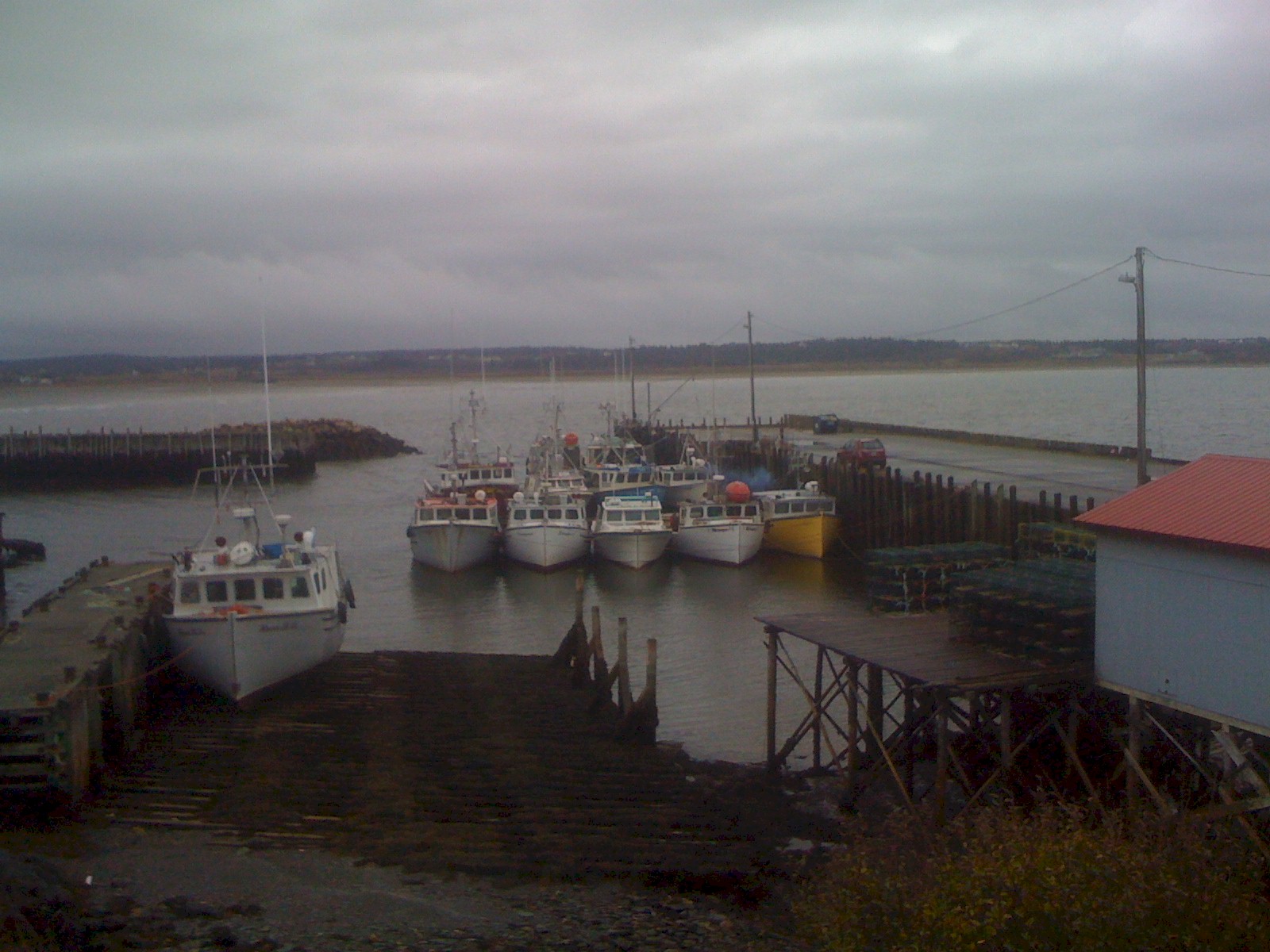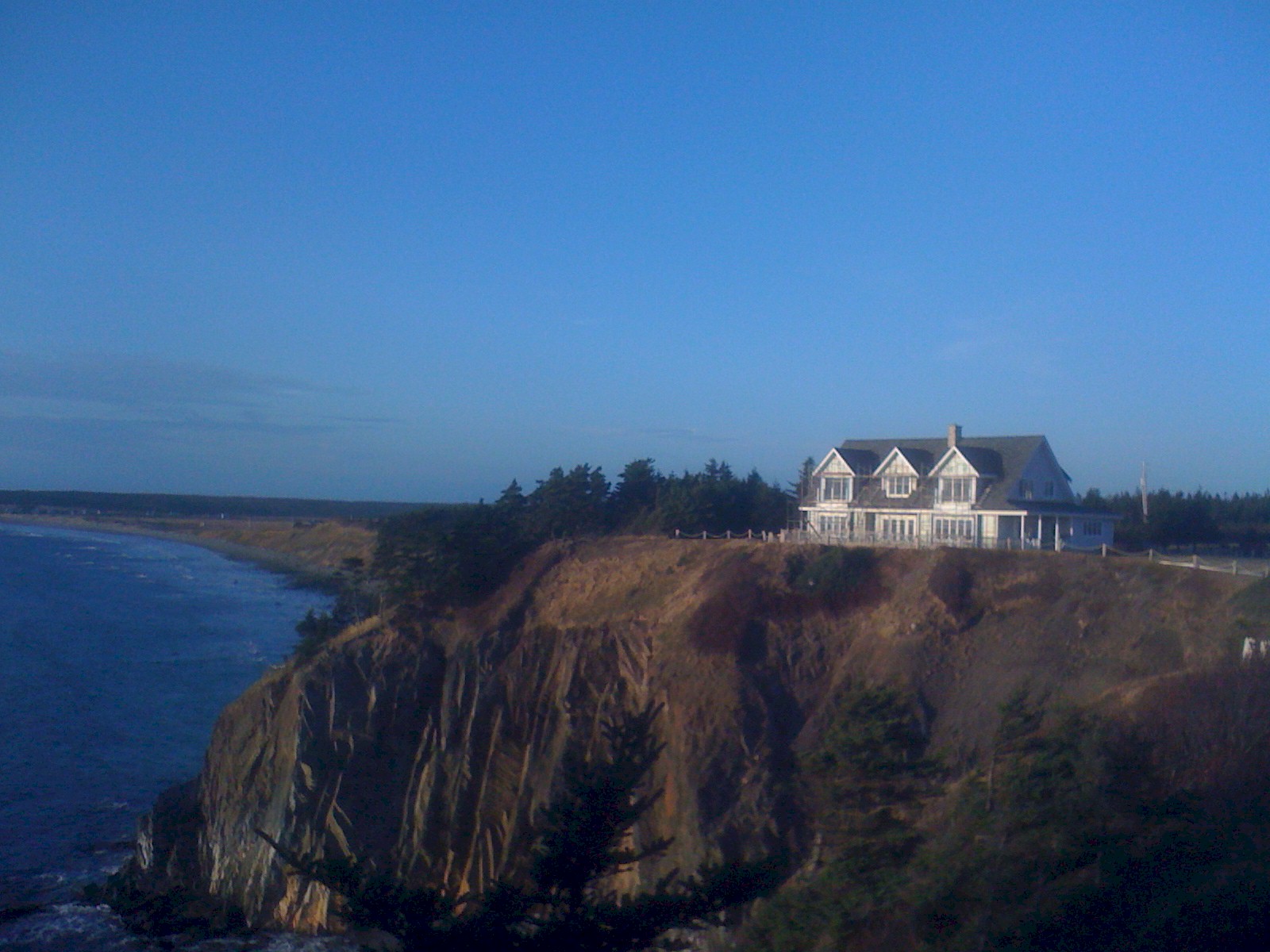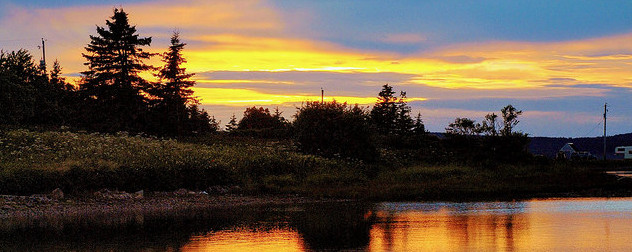SALMON RIVER, Nova Scotia —In the 48 hours before I sat down to write this column, Facebook announced a plan to make email obsolete; a three-month rally in the financial markets shuddered to at least a temporary halt; and the Beatles finally arrived at the iTunes store.
But here, high on a windswept cliff along Nova Scotia’s southwestern coast, time seems to almost stand still.
In the tiny fishing village of Cape St. Mary’s, just up the shore, sparks are flying and machinery is grinding as fishermen hurry to get their boats ready for the lobster season. Those boats spend a good part of each day resting on dry ground next to their docks, because this stretch of coast is where the Gulf of Maine becomes the Bay of Fundy, home of the highest tides in the world.
This is the heart of Acadian Nova Scotia. Each sizeable settlement has a “depanneur,” or convenience store, where the locals linger to share the news with one another, perhaps over an ice cream cone (even in November). I can understand some spoken French when I am in Paris or Montreal, or when I listen to Canadian radio. But here, the dialogue is so accented, so fast and so filled with local slang that it might as well be Swahili. I don’t get a word of it. Anglophone Canadians, all of whom took years of French in school, tell me the same is true for them.
Not that it matters. When I walk into a depanneur, as I did last night to pick up a loaf of bread, I am instantly recognized as both an Anglophone and as someone “from away.” Throughout Nova Scotia, “from away” means someone from beyond the Maritime Provinces. Here, however, it can even mean someone from Yarmouth, the non-Acadian city just 20 miles down the road.
In much of Quebec outside Montreal, there are many people who speak little English and prefer to avoid it. Here, even though the washrooms at the local Tim Hortons donut shop are labeled “Hommes” and “Femmes,” visitors from away are always addressed in English.
In the depanneur, I was immediately greeted in the somewhat lilting local accent with a brief, friendly hello — an invitation to linger and chat if I wish, or to complete my business and be on my way. The Acadian manner reminds me of New Yorkers (the real ones, not the stereotype): They are friendly if you want to socialize, but otherwise they keep a respectful distance and grant you your privacy. Meanwhile, among themselves, they are a very warm and closely knit community.
Their history has made them this way. These are descendants of some of the families who were expelled from Nova Scotia by the British in the 1750s, in what we would today call ethnic cleansing. The British, seeking to tighten their hold over Canada, forcibly dispersed the Acadians among the American colonies. Some Acadians made their way west to the Mississippi River and traveled downstream to French-held Louisiana, where they became today’s Cajuns. Nearly a decade after the expulsions, a few were permitted to return to Nova Scotia — not to the fertile farmlands of the Annapolis Valley and Minas Basin from which they had been evicted, but to this place, amid the acidic spruce forests and the chilly early summer fogs. The returned Acadians made their living from the sea and the woods, and largely kept to themselves.
I have been coming here regularly for more than four years. In 2006 we bought several properties along the shoreline as long-term investments for some of our clients. One of those properties is Eagle's Cliff, a large house perched just at the edge of the bluff overlooking the ocean. We licensed the house as a tourist accommodation and rent it for vacations, business travelers and social gatherings. A local agent and a property manager take care of the guests when they arrive.
This time, I am staying at the house with my colleague Ben Sullivan, the manager in charge of our Canadian activities.
We came to meet with our local representatives, check on the property, and develop rental rates and marketing plans for next year. We also wanted to try out the latest transportation option in this part of the world: scheduled air service, a few days each week, between Portland, Maine, and Yarmouth.
After taking a regional jet from LaGuardia to Portland, we collected our bags, exited the terminal, and walked across a parking lot to a general aviation building. There, we met the pilot of our eight-seat, twin-engine Cessna 403. We waited a few minutes for the two other passengers to arrive (“scheduled” air service being a relative term), then climbed aboard for a 70-minute trip at 7,000 feet above the ocean. It was surprisingly smooth and, with the plane’s heater on, quite comfortable. Remember to use the rest room before you embark, though, because there is none on board.
The air link comes not a minute too soon. This region was devastated last summer by the loss of ferry service between Maine and Yarmouth. The Cat, a high-speed ferry that made daily runs from May through October, was canceled after the Nova Scotian government ended a $6 million annual subsidy. American tourism in this part of the province promptly tumbled by between 60 percent and 80 percent, depending on which statistics you trust. Ben managed to compensate by increasing our marketing to Canadians.
The tourists mostly come in the summer, of course. There is an Acadian music festival each year, and many U.S. and Canadian artists stay in the area and open their studios. There also is whale-watching, golf and excellent canoeing nearby, and a fine beach, although the water will not get above 60 degrees. The best weather, meaning the least fog, is late in the season, from mid-August to early October.
When the mercury reached 106 degrees in Manhattan last July, I remember wishing I could be up here. It never gets above 80 at the shoreline. The house does not have air conditioning and does not need it.
Storms, with heavy rain and hurricane-force wind, can happen at any time of year, and they often do. It snows between December and March, though the nearby open water prevents the subzero temperatures that are common across northern New England. The main constants are the solitude and the unchanging rhythms of the Acadian lives that continue all around.
It is an excellent place to come and write, to paint, to plan and to think. And also to bake, judging by the supplies one of our guests left in the kitchen. It works well for me at any time of year.
“If I did not have this place in my life,” I told Ben as we drove away from the lighthouse and the docks at Cape St. Mary’s, “I probably would have to invent it.”
















November 23, 2010 - 3:38 pm
Larry,
Really nice piece.
Henry
November 26, 2010 - 5:24 am
Merci! Wonderful to read an “etranger’s” (from away)view of our region.